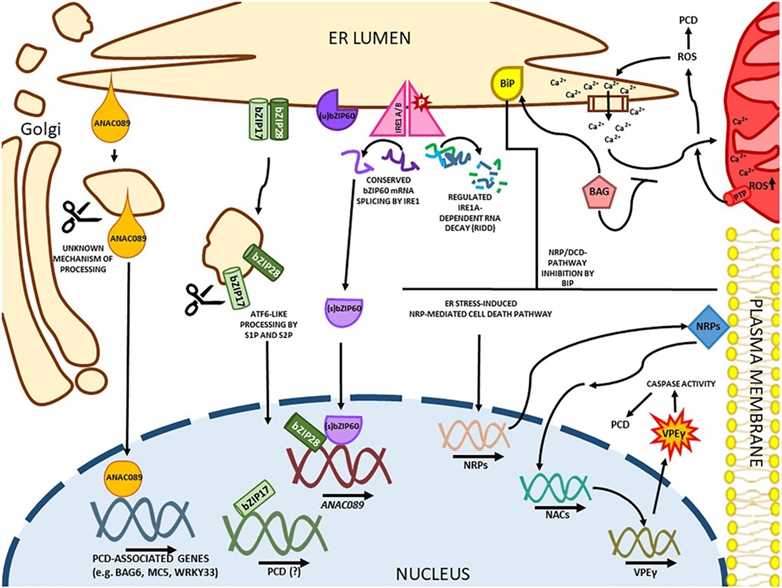The endoplasmic reticulum (ER) stress response is triggered by any condition which disrupts protein folding and promotes the accumulation of unfolded proteins in the organelle lumen. In plant cells, the evolutionarily conserved unfolded protein response is activated to clear unfolded proteins and restore ER homeostasis. However, if ER stress persists and cannot be reversed, prolonged stress can lead to cellular dysfunction that activates cell death signals. ER stress-induced cell death signaling is an important contributor to plant stress adaptation.
Lifeasible, as a leading global company, is committed to helping our customers achieve effective and successful research. We provide a mechanism analysis of programmed cell death induced by plant endoplasmic reticulum. We always deliver reliable results and reports on time to our customers worldwide.
 Fig.1 ER stress-induced cell death in plants. (Simoni EB, et al., 2022)
Fig.1 ER stress-induced cell death in plants. (Simoni EB, et al., 2022)
Lifeasible is always devoted to providing high-quality and satisfactory service to our customers. If you are interested in our services or have any questions, please feel free to contact us or make an online inquiry.
Reference
Lifeasible has established a one-stop service platform for plants. In addition to obtaining customized solutions for plant genetic engineering, customers can also conduct follow-up analysis and research on plants through our analysis platform. The analytical services we provide include but are not limited to the following:
Get Latest Lifeasible News and Updates Directly to Your Inbox
Adaptive Evolutionary Mechanism of Plants
February 28, 2025
Unraveling Cotton Development: Insights from Multi-Omics Studies
February 27, 2025